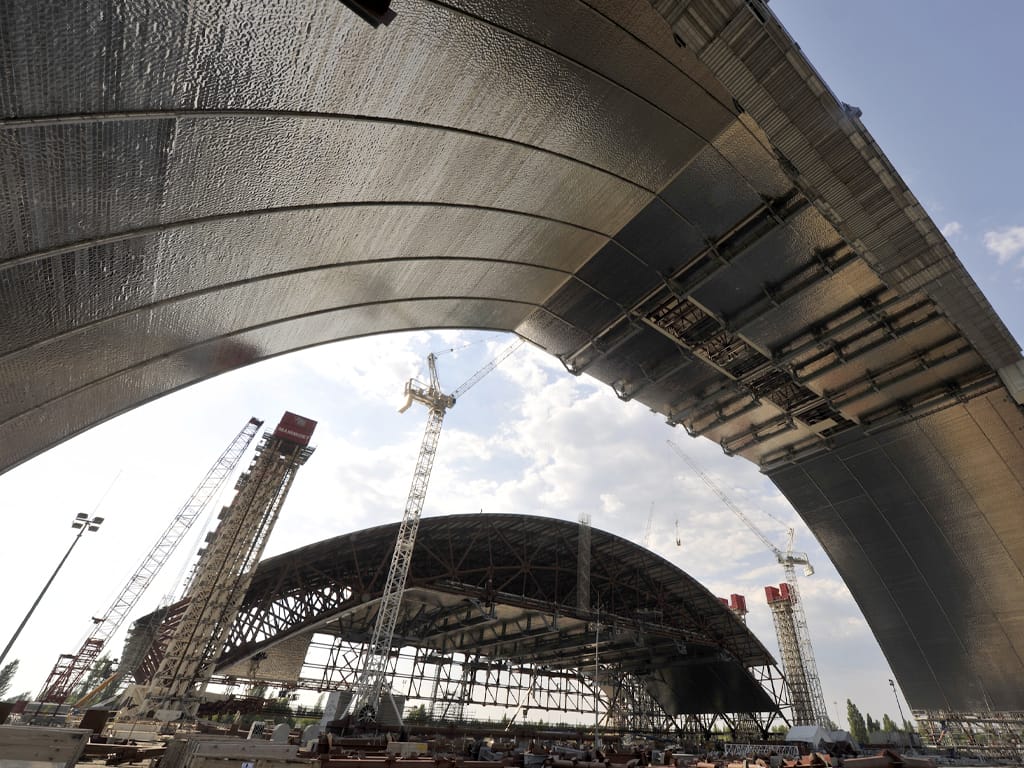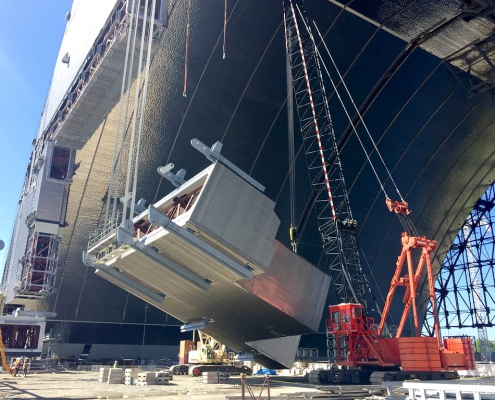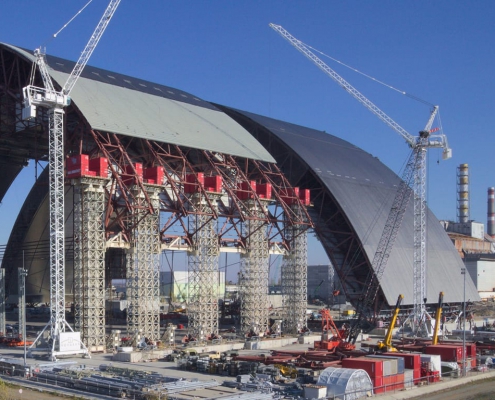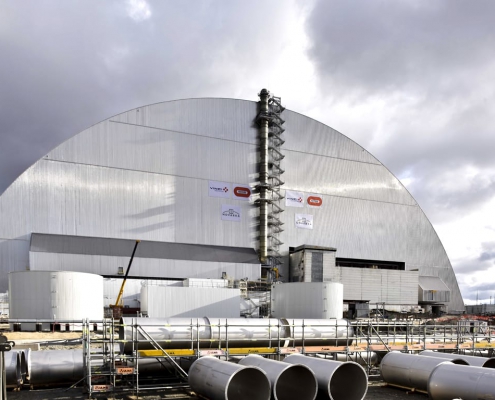Construction of the extremes
The reactor in Chernobyl is safely sealed. Kalzip is not only involved in new and refurbished schools and kindergartens. With its protective cover we are also protecting the damaged reactor in Chernobyl for the next 100 years.
Challenges are familiar to Kalzip, as our specialist projects often require bespoke solutions. Our wide range of sophisticated products and systems means we can provide the right solutions for most project requirements as we successfully transfer technologies and designs from special projects into our standard product range to make them a market-ready solution. We are able to do this because we have our own in-house machine development facilities, in which we design, manufacture and maintain our machines involved in the production process.
Thanks to our knowledge transfer , the lessons learned from the Chernobyl sarcophagus can be applied to a new product range.
Similar to the cutting edge engineering derived from Formula One or space technologies, we can develop materials and systems for extreme conditions. The knowledge we gain is later incorporated into our product portfolio, for example the “Vario LB” system for refurbishment, which recently won the Plus X Award, features many components from the Chernobyl application. It is precisely these synergies that benefit Architects, Contractors and clients for public buildings such as hospitals, care centres, schools and commercial properties. Knowledge gained from applications such as international sports stadiums, airports and even the new sarcophagus at Chernobyl ensure that any construction project utilising the Kalzip system will be long-lasting and sustainable.
Become a Kalzip® Follower or part of the Kalzip® family and discover more international Kalzip® projects.
Follow us on Social Media
Register for our newsletter
The technical parameters at Chernobyl were not the only challenging ones
The facts and figures surrounding the new Chernobyl protective envelope (table at the end of the text) are truly impressive, and it is clear that a high level of technical performance was required from all those involved to realise the “largest mobile structure in the world to date”. This project was also challenging in a completely different way. First and foremost, the concerns about exposure to radiation at the construction site, as the installation work took place in the immediate vicinity of the damaged reactor. Fortunately, these concerns could largely be allayed through enhanced protective measures and training for the personnel involved. Extremely complex coordination on site was also key to the success of the project. As team players, Kalzip were aware of the added responsibility we had taken on with this project and successfully collaborated with all parties involved in the international consortium.
All in all, the issue of sustainability takes on a completely different dimension here. While the ecological perspective of our clients usually focuses on material parameters, energy efficiency and environmental compatibility, for the Chernobyl project, manufacturing quality, durability and structural performance also played significant roles.
The containment of the reactor certainly challenged Kalzip – but not in areas that were uncharted territory for us. We simply rose to the challenge, and have been able to showcase the competencies that already play an important role in our corporate culture and product quality. In this way, we were able to incorporate the extreme project requirements into an extremely good product solution.
More information about the project can be found in the project description.





